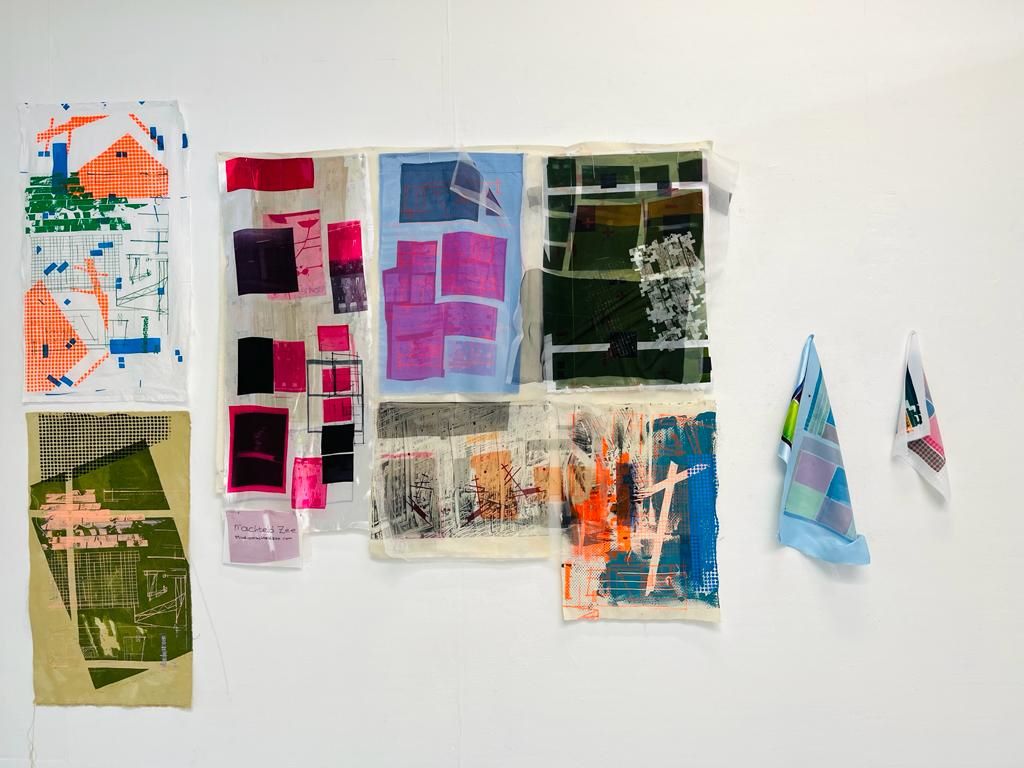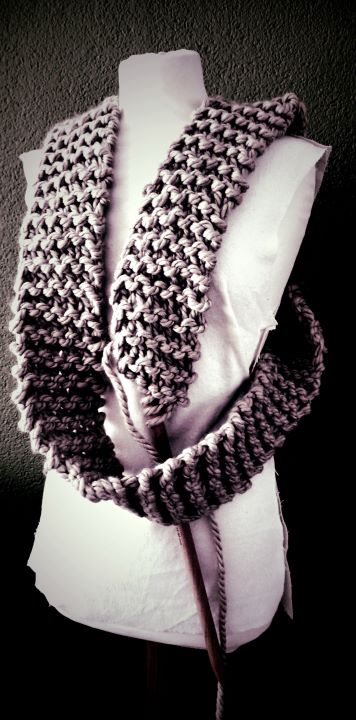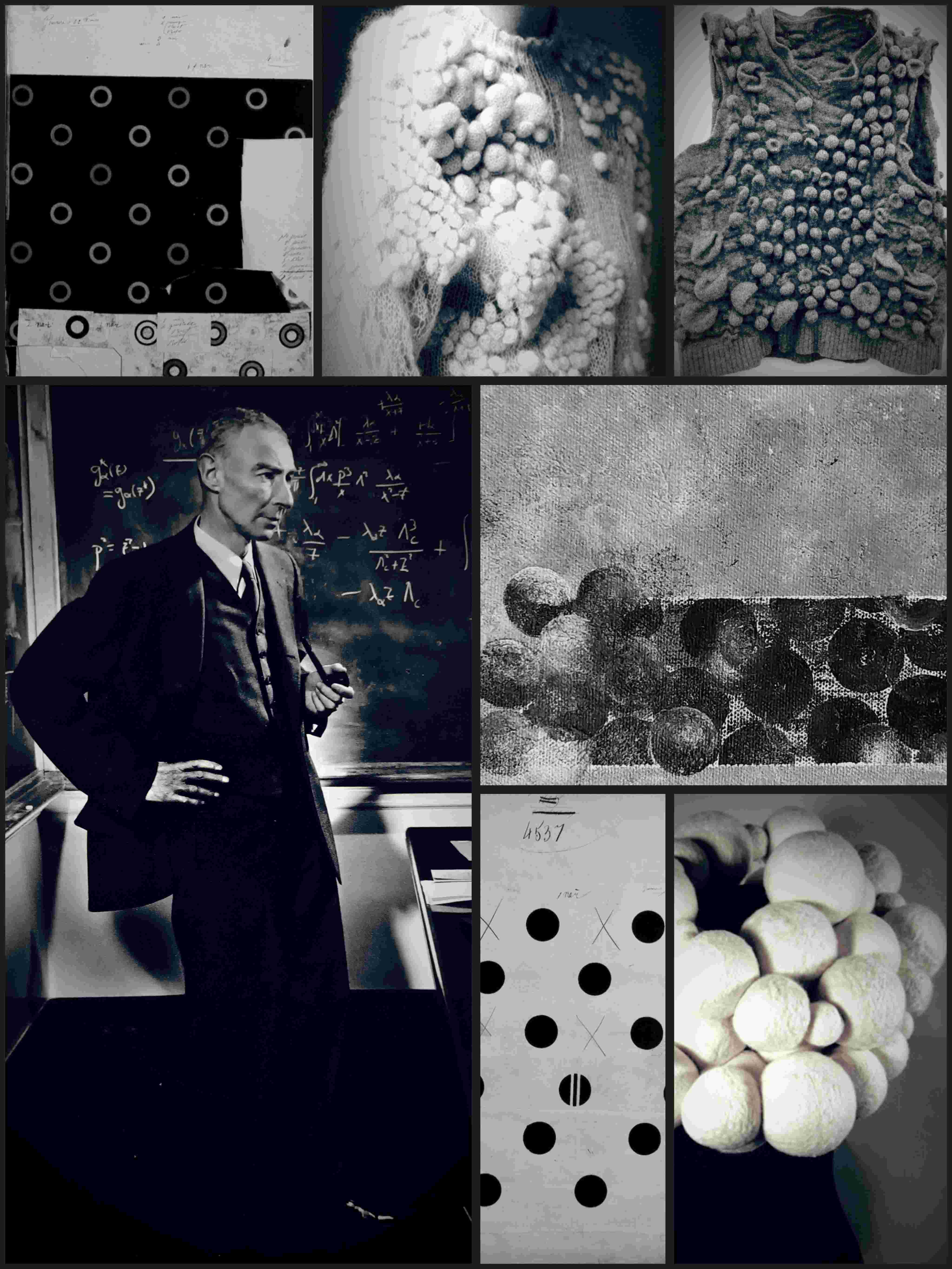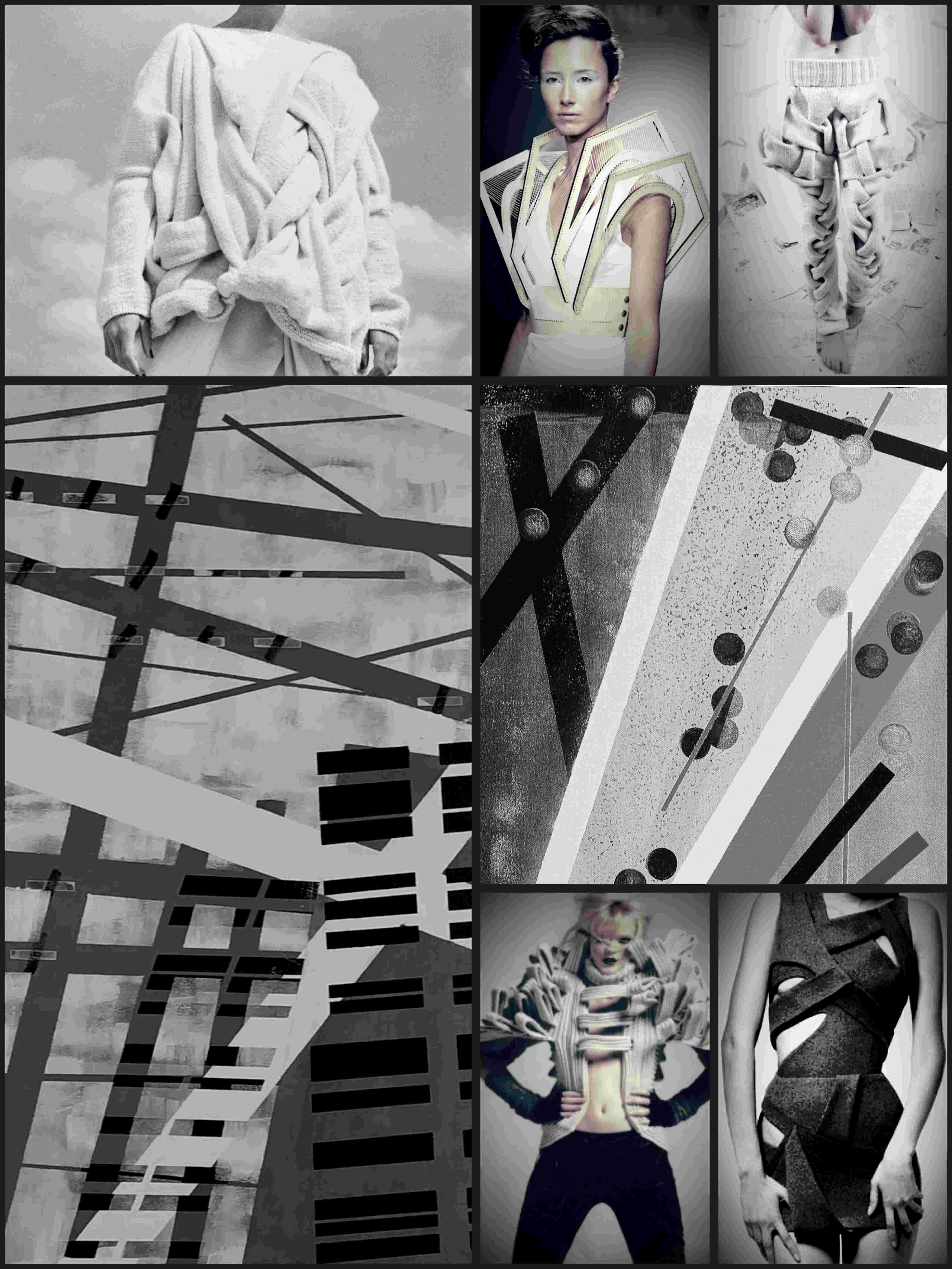1. State of the art, project management and documentation¶
Research & Ideation¶
motivation (n.) 1873, ‘act or process of furnishing with an incentive or inducement to action;’ see motivate + -ion. Perhaps borrowed from German, where motivation is attested by 1854. Psychological use, "inner or social stimulus for an action," from 1904.
Adventure, learning, and the ensuing meeting between brain and soul
I have tried on many coats in the past thirty-nine years.
As a child I was an adventurer, discovering my surroundings in the neighbourhoods of the small, provincial town I grew up in. In my teens I was fond of languages, and theatre. At university I learned about law and the science of politics, which I found both interesting. Law, because it is so neatly organisable, and political science because it teaches the fundamentals of philosophy, history and human behaviour. It was thus societal fabric I was interested in. I discovered I loved academia and devoted myself to that until my early thirties.
It was not until my mid-thirties that I shed that skin and turned towards the arts – and became an avid painter. My soul has gotten somewhat loud in the past few years. What is it trying to tell me? What are all these emotions swirling inside of me? Should I listen to them? Ignore them and keep going? Both? What is going on? Art has helped me channel these ancient life questions within humankind. The love and curiosity for colours, shapes and composition, and the translation of the ‘silent language’ of the elusive human soul into tangible objects has grasped me and it is not letting me go.
In 2023 I took a course in textile design at Central Saint Martins. My aunts Reineke Hollander and Nan Hollander are textile artists, and I wanted to see if working with textiles would appeal to me, and, as it turned out, I loved every second of that program.
 Exposition of my textile designs at Central Saint Martins. Photo by Janetta Ninkeula 2023
Exposition of my textile designs at Central Saint Martins. Photo by Janetta Ninkeula 2023
The Fabricademy program offers a combination of all of my past paths and holds the mystery of what my future brings. The adventure is: discovering new worlds for me in the form of the beta science community, while crafting beauty for the world to see, and discovering how both my brain and my soul respond to another phase of shape-shifting.
Neuroplasticity
How does the brain orchestrate shape-shifting?
Neuroplasticity, also known as neural plasticity, or brain plasticity, is the ability of neural networks in the brain to change through growth and reorganization. It is when the brain is rewired to function in some way that differs from how it previously functioned. These changes range from individual neuron pathways making new connections, to systematic adjustments like cortical remapping or neural oscillation. Other forms of neuroplasticity include homologous area adaptation, cross modal reassignment, map expansion, and compensatory masquerade. Examples of neuroplasticity include circuit and network changes that result from learning a new ability, information acquisition, environmental influences, practice, and psychological stress. (Wikipedia)
References & Inspiration¶
As psychiatrist Viktor Frankl writes in Man’s Search for Meaning (1959);
‘[…] mental health is based on a certain degree of tension, the tension between what one has already achieved and what one still ought to accomplish, or the gap between what one is and what one should become.’
Rabbi Abraham Twerski explains it well:
I jumped for joy when I discovered the Fabricademy program – a new challenge to stretch my brain and my soul, and hopefully find something that speaks to others and adds to the global knowledge community. What I most dearly hope to find is other pioneers; that is happiness for me – joining other searchers in nurturing our quest for knowledge.
It is difficult to express in words the joy felt when such meetings take place. Art is better equipped to shed light on this, rather than language. There is however one moment in history that is captured on video that shows the despair and relief humans felt after being freed from years of totalitarian oppression. I have chosen this video to share as I believe the impact of totalitarian oppression on a human is the polar opposite of the joy one experiences when they meet like-minded individuals in their quest for knowledge. Some background information on this video.
In 1989, a few months before the fall of the Berlin Wall, thousands of East Germans, in their quest to move to Western Germany, crossed the border separating East Germany and Czechoslovakia, ultimately reaching Prague. These refugees flooded into the West German Embassy's gardens, with approximately 4,000 of them enduring cramped living conditions. The shared objective among all of them was clear: they sought permission to leave the embassy and enter West Germany.
Negotiations unfolded between the two German states and the United Nations. On September 30, 1989, Hans-Dietrich Genscher, West Germany's Foreign Minister, arrived at the Prague Embassy to address the escalating crisis and the East German refugee crowds. Anticipation buzzed among the people camped in the embassy grounds, and as evening descended, Genscher stepped onto the upper balcony. The expectant crowd gazed up at the balcony. Amidst calls for silence, Genscher spoke into the microphone:
"We have come here today to inform you that your departure to the Federal Republic of Germany has now become possible."
Turn the sound on.
I cannot describe in words how these thousands of outcries point to me the essence of the human spirit. It is the elusive language of the human soul that speaks to us.
Summarizing: the human spirit and the human experience are guided by the soul. The brain is our operating machine. The brain needs to teach itself to stretch through neuroplasticity. Its fuel is the joy experienced when fellow pioneers meet.
Its outcome is yet to be determined.
Documentation workflow¶
Plan for the coming six months
Preliminary plan [September 2023]:
Stretch my brain into something it has not done before;
While joining others in our quest for knowledge’;
And observing how my soul responds’;
In order to, ultimately,
Present a work of art and science, accompanied by a body of thought that speaks from human to human in a community of pioneers, in both lingual and elusive language.
Step 1¶
The first step is to make visual boards. I have started on Pinterest and looked for haute couture that I find beautiful. I noticed that I especially loved uni-coloured works, and specifically the colour black. 'Weird' creations spoke more to me than 'beautiful and polished' works. I saw knitted haute couture that I loved.
Then I laid it to rest. After the first two days of Fabricademy, I felt as if my head was melting with all the new impressions, information overflow, meeting wonderful new people, the traveling and the long days.
In the train from Leiden to Amsterdam I thought it would be cool if it was possible to incorporate a blood pressure sensor in wearables. I googled, and it already exists. The reason I chose blood pressure is because I have low blood pressure and I was googling if and how that affects mood. There is a lot of research on high blood pressure (hypertension), yet only a bit of research on hypotension, but, because clothing that measures this already exists, I moved on. Then I thought, how about measuring emotions? And I thought about the work of one of Fabricademy's alumni that wired brain sensors into garments. Then I thought, what about smell? Fear, for instance gives of a smell in sweat. And perfume makers and chemists know how pheromones work. I googled and found out that Utrecht University has recently opened a Smell Lab, where researchers look into emotions and human scent. I did not see any wearables/fashion yet, so maybe that is a lead I want to pursue.
The next day, I took some time off and watched true crime documentaries - which, strangely, calm me down. I was also inspired by knitted couture, so I went to the knitting shop and bought yarn and knitting pens. I also downloaded an app for photo collaging, and toyed a bit with that.
Step 2¶
Then I watched more true crime and leafed through one of my favourite picture books, which is photographer Yousuf Karsh's (1908 - 2002) Portraits of Greatness. This book shows almost one hundred portraits of the mid-20th century's most important political leaders, artists, scientists, philosophers, and writers. Each picture is accompanied by a page of text, in which Karsh describes the conversation with his subject prior, during and after the photoshoot. Then I watched some more true crime. Half way through the evening, I started knitting for the first time in thirty years. This is the result so far, I intend to make it into something cool, such as knitted suspenders.

Step 3¶
Decided that I shall make three visual boards, each containing one of Karsh's portraits of scientists - as opposed to eg. artists - because I want my brain to neuroplastify itself into a more beta science focus. Because Karsh's photo's are in black and white, and I prefer black fashion garments, I have decided to do the visual boards in black and white. I shall pair a scientist with a work of fashion, include one of my paintings, and one of the photos I have been taking in the streets for the past year. This way, I visually combine, art, science, fashion, and .. the streets. The last one, street impressions, does not make sense to me yet, but I expect it will look cool.
I am writing this before I have made the visual boards, and I am curious to see how they turn out.
Step 4¶
Yesterday evening, I experimented with the app GridArt and pictures found on Pinterest, my own art collection and Karsh's book Portraits of Greatness. Pictures of the streets did not make it, it did not look cool, so I decided against incorporating those in my visual boards. Initially, I wanted to make three visual boards with four images each - one of Karsh's portraits of one of the previous century's leading scientists, one picture of my paintings, one with haute couture and one of the streets. I made seven boards to see what they would look like. Eventually, I decided to make two visual boards, one with a theme of dots and one with a theme of stripes/rectangulars. In my artwork, I often paint stripes and dots.
I started with a collage including phycisist Robert Oppenheimer. After three tries with in- and excluding a range of pictures, this is the final result of the first visual board:
 Starting from the upper left, then clockwise: French textiles from Maison Robert, no° 4514, by Victor Ducroquet 1863, Paris (source: The Public Domain Review); Vogue Germany (publication date and designer unknown); Via Pinterest (designer and year unknown); Machteld Zee, Adjustment Day 2021; Faux Pearl Necklace by Hisano Takei 2005; French textiles from Maison Robert, no° 4537, by Victor Ducroquet 1863, Paris; Robert Oppenheimer, portrait by Yousuf Karsh 1956
Starting from the upper left, then clockwise: French textiles from Maison Robert, no° 4514, by Victor Ducroquet 1863, Paris (source: The Public Domain Review); Vogue Germany (publication date and designer unknown); Via Pinterest (designer and year unknown); Machteld Zee, Adjustment Day 2021; Faux Pearl Necklace by Hisano Takei 2005; French textiles from Maison Robert, no° 4537, by Victor Ducroquet 1863, Paris; Robert Oppenheimer, portrait by Yousuf Karsh 1956
Then I went to work on the second visual board. This time, including one of Karsh's portraits felt contrived. I thought about excluding Oppenheimer from the first - and getting rid of the scientists all together, but I love Oppenheimer's portrait. Not just his presence, but also the formulas on the chalk board behind him. And I liked the idea that a phycisist works with atoms, and the circular shape of (atomic) dots make it conceptually and visually cohesive. In my quest for 'neuroplastifying' my brain into a more beta science focus, I googled whether atoms are actually round. Turns out, they are not. Atoms are not spherical in shape. A sphere is a solid object, atoms do not have well defined boundaries with 'solid cutoffs'. Atoms are more like clouds consisting distributions of electrons, neutrons and protons. However, I still think the visual board looks good, and I decided to just stick with the one photo of Oppenheimer in the first collage. Bacteriologist Alexander Fleming and neurologist Wilder Penfield may be useful sometime in the next following weeks.
This is the second visual board, with the striped/rectangular theme:
 Starting from the upper left, then clockwise: Rei Kawakubo for Comme des Garçons (1987); Winde Rienstra 2012; Marcela Abal and María Inés Payssé 2010; Machteld Zee, Three stages of sorrow 2022; Unknown; Simone Shailes 2008; Machteld Zee, Inner city 2021
Starting from the upper left, then clockwise: Rei Kawakubo for Comme des Garçons (1987); Winde Rienstra 2012; Marcela Abal and María Inés Payssé 2010; Machteld Zee, Three stages of sorrow 2022; Unknown; Simone Shailes 2008; Machteld Zee, Inner city 2021
I have again used black and white filters to create colour coherence (and I love the historic feel of it), apart from two pictures in the second visual board. I think giving those two pics a dash of colour makes the second board more lively. I am happy the way the colages turned out. They are visually cohesive (both individually and the two together), they are in line with my aesthetic, and they form a good inspirational foundation for my next assignments.
Final thoughts¶
That wraps it up for week one. After the first two days of classes, I felt as if my brain was going to melt and that I would never figure out this Github/Markdown-stuff. At the beginning of building the documentation website, I thought of it as homework - annoying yet neccesary. However, when I saw I was actually able to code with Markdown, I really got into it, up to a point where I forgot I also had to eat. That is a good sign, whenever I get into a hyperfocus I enjoy it, having my brain function in conjunction with myself. With the help of ChatGPT I was able to quickly understand the coding. I felt especially proud after having succesfully coded two YouTube-clips into this website. I asked ChatGPT to take me through the steps and copied its suggested code. It took me three tries and then it worked - it made me so happy. It is Saturday now, and I have been working on this site for most of the day, and somehow I just cannot seem to stop. I keep on wanting to perfect things. I have used Canva to make a logo to replace the sample images. It took me quite a few attempts to change the grid depicting the weekly assignments, after a few tries none the links worked. I asked ChatGPT how to restore the old code, and it showed me the steps. (Go to GitHub repository, click the Code tab, find the commit, copy the red-marked deleted code - this is the original code -, paste it in Markdown and everything worked again.)
I still have to tweak here and there: center photo's, update the index and edit headers and links, but I will do that at a later stage. I have to update my home-page, which currently only displays an artist's statement.
I am curious to see if the visual boards actually influence my work in the upcoming challenges.
A few days ago I wrote about neuroplasticity and opening up new worlds. Building this one page has been a wonderful beginning and I look forward to the surprises of week 2.